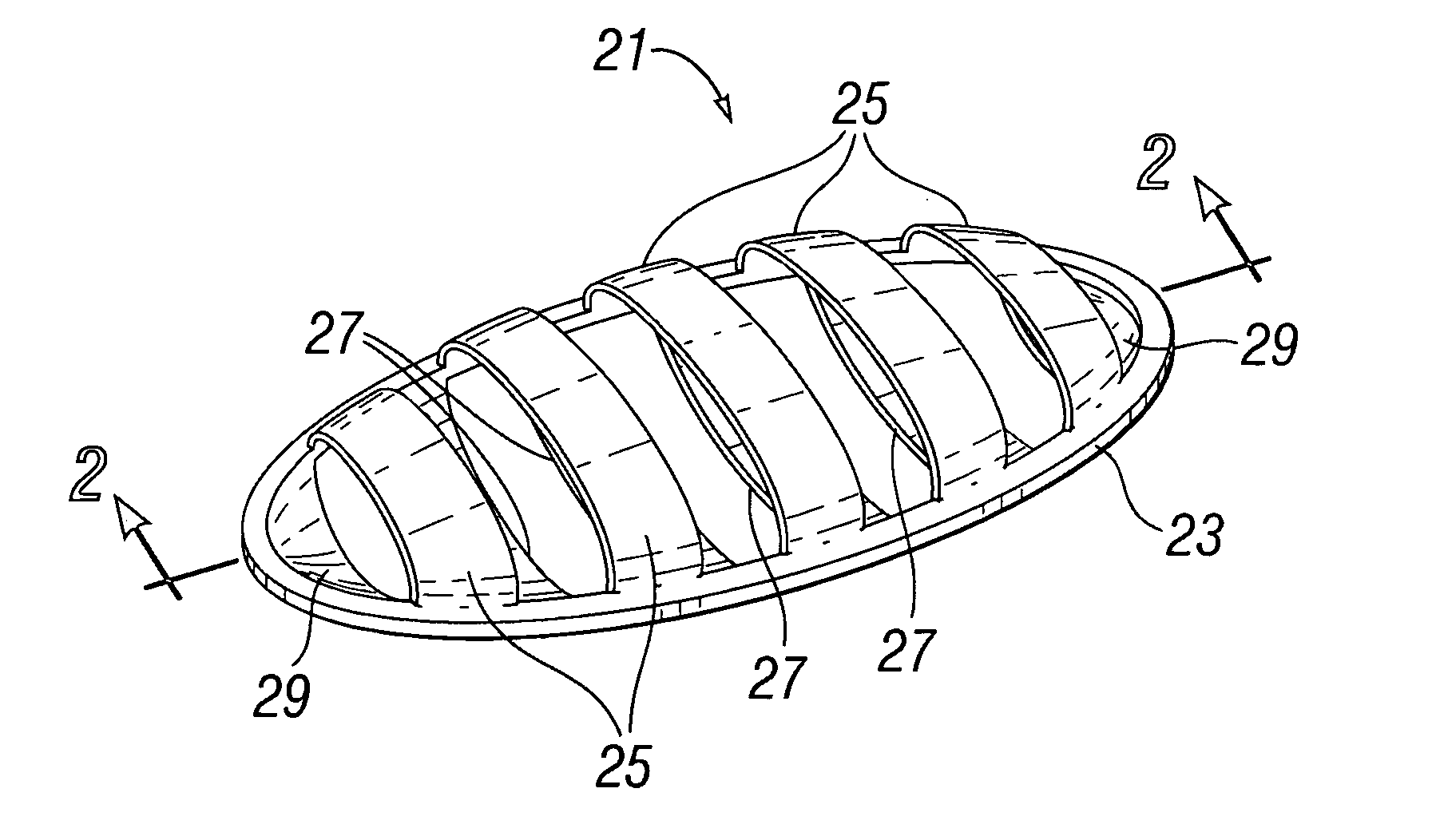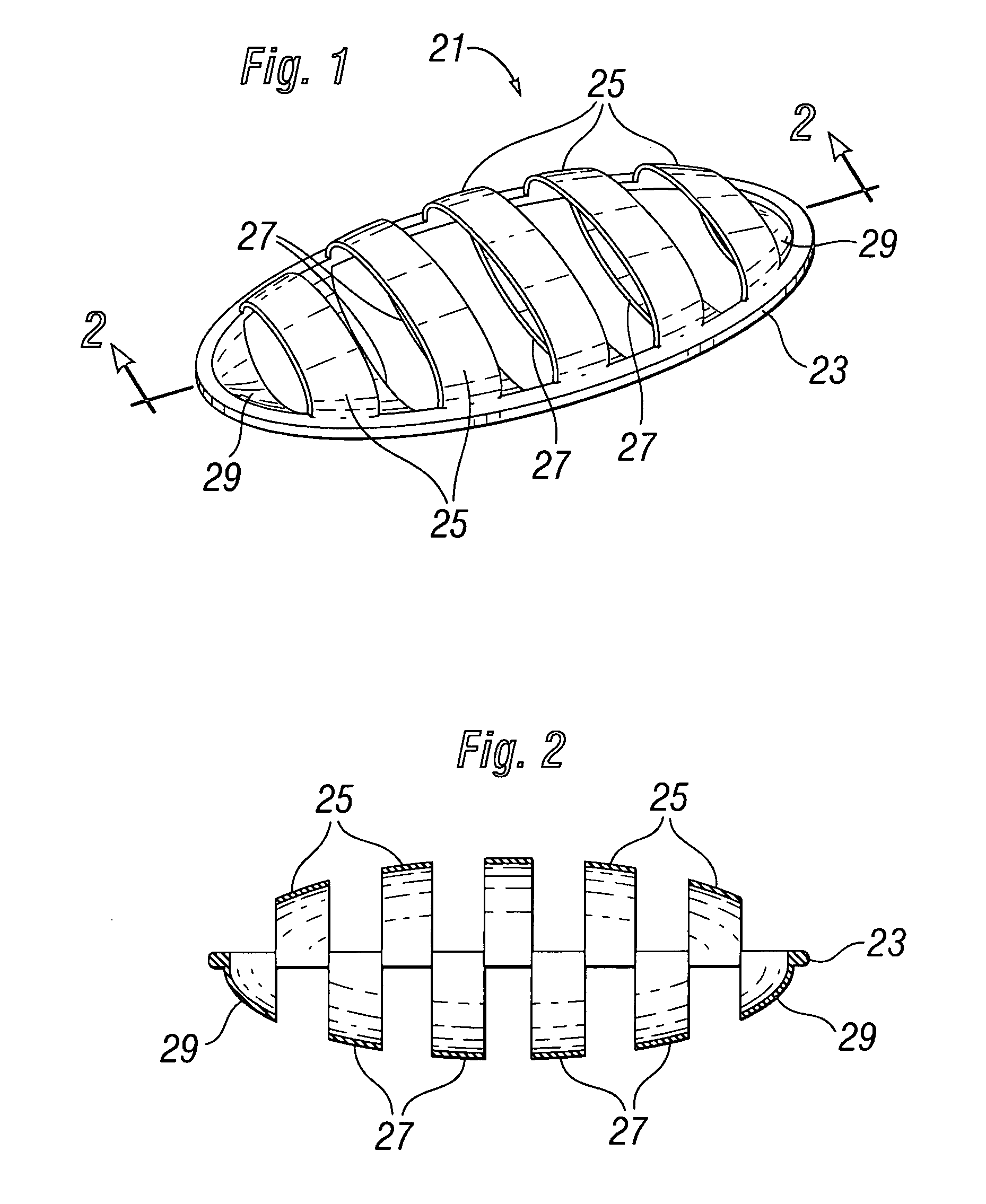Manual odor removal structure
a technology of odor removal structure and man-made parts, which is applied in the field of man-made odor removal structure, can solve the problems of limited surface area, limited surface against which to contact hands with smooth steel objects, and little to help manipulate the epidermis in sufficient degree, so as to increase the surface area, the appearance of the odor removal structure can be highly modified, and the contact with the hand is more abrasiv
- Summary
- Abstract
- Description
- Claims
- Application Information
AI Technical Summary
Benefits of technology
Problems solved by technology
Method used
Image
Examples
Embodiment Construction
[0016]The description and operation of the odor removal structure 21 of the invention will be best described with reference to FIG. 1 which illustrates a single structure which may preferably be stamped from a single sheet of formed material. The odor removal structure 21 has an outer rim 23 which may be generally oval shaped. Outer rim 23 supports a series of alternating lateral bands which include first side bands 25, each of which has two ends, and where each of the two ends are attached to the outer rim 23 and punched from the outer rim 23. A series of second side bands 27 which are continuous with the outer rim 23, but punched in the opposite direction are also partially seen through the spaces separating the first side bands 25. The terminal punched structures 29 happen to be extending to the same side as the second side bands and have one free edge, with the opposite edge being continuous with the ends of the outer rim 23 near the oval ends of the overall odor removal structu...
PUM
 Login to View More
Login to View More Abstract
Description
Claims
Application Information
 Login to View More
Login to View More - R&D
- Intellectual Property
- Life Sciences
- Materials
- Tech Scout
- Unparalleled Data Quality
- Higher Quality Content
- 60% Fewer Hallucinations
Browse by: Latest US Patents, China's latest patents, Technical Efficacy Thesaurus, Application Domain, Technology Topic, Popular Technical Reports.
© 2025 PatSnap. All rights reserved.Legal|Privacy policy|Modern Slavery Act Transparency Statement|Sitemap|About US| Contact US: help@patsnap.com


